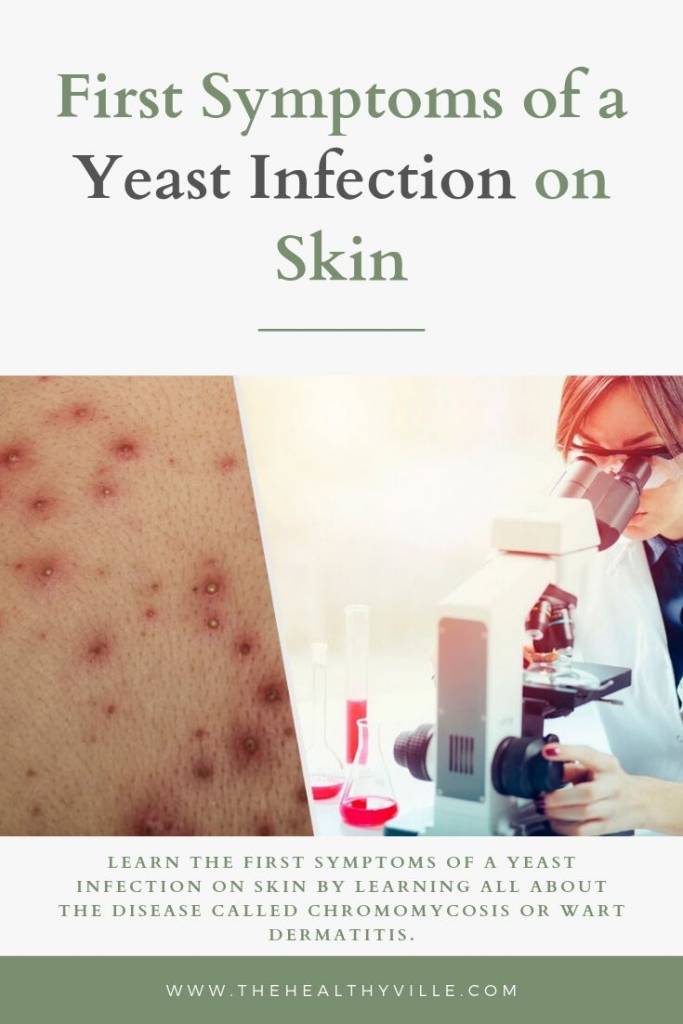Learn the first symptoms of a yeast infection on skin by learning all about the disease called chromomycosis or wart dermatitis.
Although chromomycosis is native to tropical and subtropical regions, cases have been found worldwide. This disease, in any case, is not contagious.
Chromomycosis is a chronic yeast infection on skin and subcutaneous tissues. This means that it is a fungal disease and has a long duration.
Its main feature is the formation of black pigments. These appear mainly in the lower limbs, especially in the feet. As the disease evolves, nodules and wart-like plaques form. These can ulcerate and generate tumor masses in the form of cauliflower.
Chromomycosis also goes by other names such as: Fonseca disease, Lane disease, Chromium blastomycosis and wart dermatitis.
General aspects of chromomycosis
Since 1911, the disease it has been detected in more than 50 countries on all continents. However, there have been isolated cases on five continents, which is why it is considered a universal disease.
This disease is typical of tropical and subtropical areas, since the fungi that produce it usually grow in regions with a temperature of 25-28 ° C.
People in rural areas who do not wear shoes generally contract the disease . In particular, it affects those who raise goats. On the other hand, individuals under 20 years rarely suffer from it. In fact, it is more common in men between the ages of 30 and 60.
Some families have a greater genetic predisposition to get this yeast infection on skin; although it should be noted that it is not a contagious disease.
Chromomycosis is a rare disease, which is transmitted by contact with fungi present in plants. Usually, such contact occurs through an injury, such as a scrape, a puncture, any form of breakage or opening in the skin.
Causes and first symptoms of yeast infection on skin
Chromomycosis is transmitted by dematiaceous fungi, which are characterized by producing very resistant spores. Such spores are disseminated by man, animals or by the wind. This means that they reach the ground and settle there, mainly in wood and plants.
Once contracted, the yeast infection on skin progresses slowly over several years. This means that the fungus requires time to adapt to the host. While doing so, the microorganism forms thick black structures. As a result, microabscesses appear on the skin, which eventually become ulcers and then into small tumors. If the lesions heal, they almost always leave the area with irreversible deformations or partial disability.
The first symptoms appear at the site of the yeast infection on skin, that is, where fungi appeared. Sometimes they spread lymphatically to other places in the body. The incubation time of the disease is very variable. There are cases ranging from 2 months to 40 years.
Approximately, the average time between the onset of the first symptoms and the diagnosis can be up to 14 years, which means that this may not always occur at an initial stage.
Chromomycosis diagnosis
Doctors make the chromomycosis diagnosis with a laboratory test. It is necessary to take a sample of the scabs or scales present on the skin. For this, they make a good washing of the lesions, with soap and water. Then, they clean with alcohol and then proceed to take the sample.
They place the sample on a slide sheet, along with a drop of 30% potassium hydroxide.
Then cover it with a coverslip.
They leave it at rest for a period of 30 minutes and then observe it under a microscope. The test allows to determine if there is a presence of chromomycetes. If there are, the patient gets the chromomycosis diagnosis.
On some occasions, especially in chronic patients, doctors order blood tests. These reveal the presence of some antibodies.
Further info: Eliminate Skin Tag Wart In 7 Days Without Leaving Marks Using This Home Remedy
The main complications
The complication of chromomycosis is bacterial superinfection. This is an additional infection whose origin is bacterial. After infection, the lymph nodes swell and very painful nodules appear.
Long-term lesions could lead to the appearance of spinocellular carcinomas. These are malignant tumors that appear on the skin, particularly in the spiny stratum of the skin.
Spinocellular carcinomas are dangerous, since they easily metastasize to other areas of the body. Sometimes the infection spreads through the blood. In that case there are other areas of the body that are affected; such as: the lymph nodes, the central nervous system and the lungs.
Don’t forget to SHARE the symptoms of a yeast infection on skin with your friends and family on your social networks!

